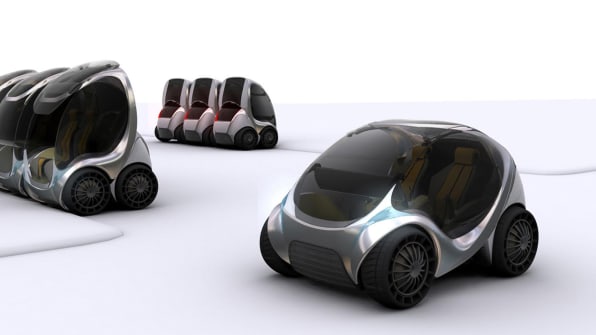2017 Best Car Detail Place in the Twin Cities
When it comes to traffic pollution in cities, driverless cars are often seen as a savior: No heavy foot on the gas pedal, no endless circling looking for a parking space, and–ideally–car-sharing programs that reduce the total number of cars. But it's not the drivers that are the problem, it's the cars. Even making all the cars electric isn't the answer, because we'd still be hauling around 4,000 pounds of automobile (the average weight for a new car in 2010) just to get 180 pounds of humans to their destination.
There are many possible answers, and some of them are showcased by MIT's Mobility-On-Demand project, which gathers concepts that could replace cars in cities. They're either electric or human powered and range from two wheels to four, but they're all a lot more practical in a city than a huge car.

One of the less-likely designs is the PEV, or Persuasive Electric Vehicle, an electric trike concept that is designed as a bridge between an electric car and a regular bike. The 'Persuasive' part of the name comes from its goal–to persuade more people to exercise. The PEV can be a simple electrically assisted trike with a canopy (and the lone wheel at the rear instead of at the front, to improve stability in corners), or a covered wagon. The idea is that using a powered trike may make people switch to solely human-powered transport.
More likely are previous MIT designs like the CityCar, aka the Hiriko folding electric car, a tiny four-wheeler made for one or two occupants. The CityCar is particularly neat because it has two features that make it especially well-suited to crowded urban settings. The rear wheels, which turn in the opposite direction to those up front, allow the vehicle to spin on the spot. The "car" also converts from a low-down, stable driving position to an upright parking position, as you can see in this video. That makes parking easier and allows for ranks of CityCars to be lined up in tight spaces as part of car-sharing systems.
The Hiriko is a real-life version of the CityCar concept, which has been tested on the roads of Vitoria, Spain, complete with both its headline features.
These are far from the first designs for small, city-suited vehicles though. In the 1950s, the Isetta, or "bubble car," was built in several countries after its launch in Italy. The BMW Isetta managed 78 mpg, seated one, and had the steering wheel mounted on the door, which made up the entire front of the car (and made it tricky to get out if you parked facing a wall). It sold almost 170,000 units.
We're so accustomed to huge cars jostling through narrow-laned city streets and parking up against every spare inch of curb area that we don't notice the most obvious way cars pollute our cities. Just by being there, cars fill up absurd amounts of space and thunder through our lives. Smaller, quieter, slower vehicles would better suit the confines of our increasingly urban lives.
2017 Best Car Detail Place in the Twin Cities
Source: https://www.fastcompany.com/3054602/these-tiny-reimagined-cars-are-perfect-for-city-dwellers
0 Response to "2017 Best Car Detail Place in the Twin Cities"
Post a Comment